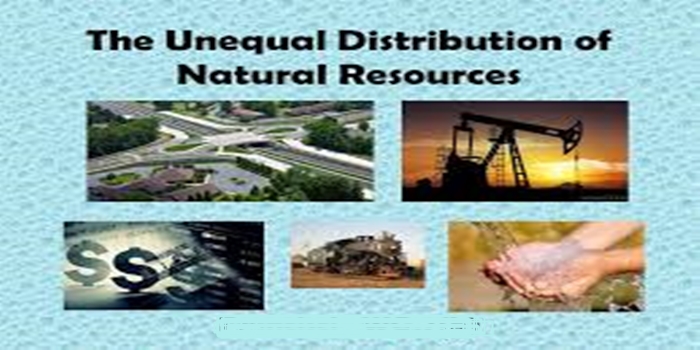In this article, we discussed the meaning of uneven resources distribution, consequences, we also talked about the effects of uneven distribution
Definition
Uneven resource distribution is the unequal distribution of natural, economic, and human resources across different regions, populations, and social groups. This can lead to disparities in wealth, economic power, and access to basic needs.
Uneven resource distribution can have a significant impact on:
Economic development: Some areas may have abundant resources, while others face scarcity.
Quality of life: Some areas may have a higher quality of life than others.
Access to opportunities: Some areas may have more access to opportunities than others.
Global relationships: Political geography can shape global relationships.
Trade patterns: Uneven resource distribution can influence trade patterns.
Conflicts over resources: Uneven resource distribution can lead to conflicts over resources.
Stability of nations: Uneven resource distribution can impact the stability of nations.
Some factors that can contribute to uneven resource distribution include:
Human activities like deforestation, mining, and agriculture
Technological advancements
Historical and cultural factors
Economic considerations
The uneven distribution of resources can have many consequences, including:
Conflicts
Nations may fight over access to, control of, or distribution of resources. These conflicts can involve human rights violations and armed conflict.
Migration
People may move to areas with more resources, or away from areas that lack resources. This can lead to a brain drain in the areas that people leave, and can also leave rural areas with an aging population.
Economic activities
Economic activities in a region are often directly related to the resources available there. For example, farming, fishing, and mining are all economic activities that depend on resources.
Trade
Countries that lack important resources can trade with other countries to acquire them.
Wealth and quality of life
The quality and quantity of goods and services available to people in a place determines its wealth and quality of life.
Environmental damage
The unsustainable use of natural resources can lead to pollution, loss of biodiversity, and soil erosion.
Food insecurity
Wealthier countries can afford to import more food from other countries, which can limit the food supply in those countries.
Loss of availability of natural resources and the livelihoods that depend upon them is also a major cause of conflict and war, which can jeopardize human rights, further damage the environment, destroy livelihoods and harm human health.
The uneven distribution of resources can have many effects, including:
Economic inequality and poverty
When resources are not distributed equally, some people have less access to food, water, and energy, which can lead to poverty and economic inequality.
Conflict
Nations may try to control resource-rich territories, which can lead to armed conflict, human rights violations, and exploitation.
Environmental degradation
When resources are not distributed equally, the environment can suffer. For example, in Nigeria, the region where crude oil is found has experienced environmental degradation due to oil spillage.
School performance
When schools are underfunded, students may have less access to high-level courses and experienced teachers. This can lead to lower school performance, attendance, and graduation rates.
Human migration
People may move to places with more resources, or away from places that lack resources.
Economic activities
The economic activities in a region are often directly related to the resources in that region. For example, farming, fishing, ranching, and mining are all economic activities that are directly related to resources.
Trade
Countries may trade with other countries to acquire resources that they don’t have.
Conclusion
Resource distribution is the way resources are spread across the Earth and allocated among different sectors of the economy. Resources include water, land, minerals, rain, and wealth. it is important for understanding how regions develop, economic activities, and trade patterns. It also influences how resources are managed and utilized, and who has access to them.


